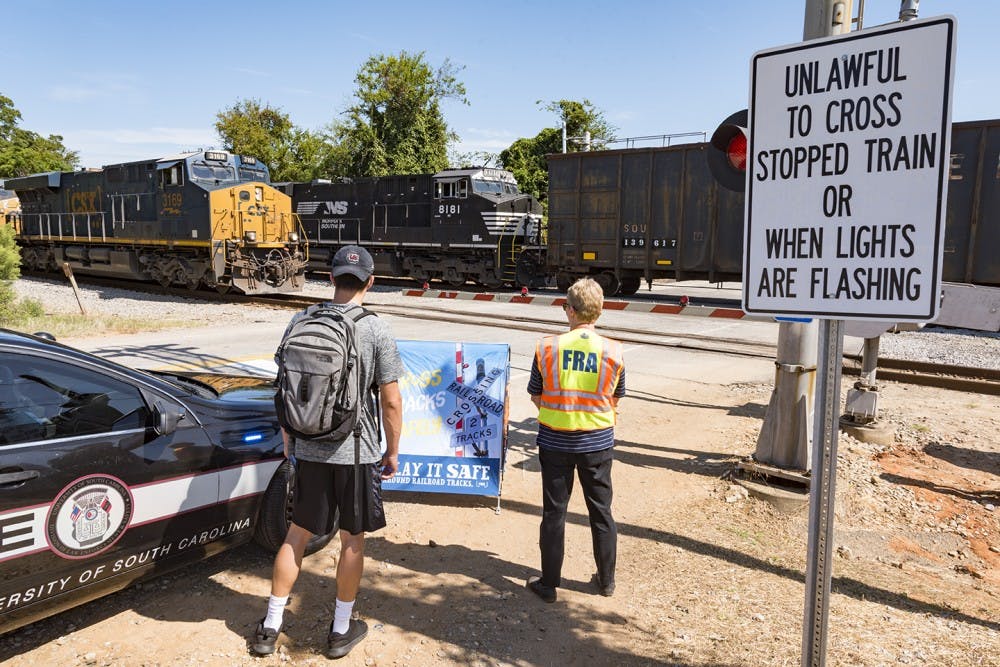Trains are a part of life for all Columbia residents, especially USC students making their way to and from campus. A common concern for railway and public safety officials is students' lack of regard for the dangers of railroad tracks.
In 2016, the U.S. as a whole had an average of eight train-related accidents per day and 265 train-related fatalities throughout the year; statistics like these are the reason for the nationwide Rail Safety Week.
CSX Community affairs manager, Sheriee Bowman, is a strong advocate for train safety in Columbia. Bowman and her team are holding safety showcases at crossings as part of U.S. Rail Safety Week.
Bowman stressed the importance of staying aware when crossing tracks as the environment and constant construction in Columbia can make it very hard to hear a train coming — even without distractions. CSX recommends to always assume a train is coming, whether you hear something or not.
"You see a lot students walking around with earbuds in their ears ... a lot of times they think they can hear a train," Bowman said. "If they're not paying attention, that could easily turn into something fatal."
Lack of attention is not the only thing leading to train accidents. According to Amtrak, a frequent cause is pedestrians seeing oncoming trains and attempting to outrun them due to the belief that the train is moving slowly. According to Operation Lifesaver's state coordinator Janice Cowen, this is not the case, as trains can be moving at speeds up to 79 miles per hour.
"We say trains can't stop quickly, but they can stop," Cowen said. "But they need to know a long way up the track."
Information matters when it comes to railway safety. Because a train can take over a mile to stop, they are unable to properly react to seeing a stopped vehicle on the tracks. Cowen advocated strongly for the importance of finding the ENS plate of a track crossing and alerting the Department of Transportation in case of emergency.
Among the causes of fatalities in train related accidents, one of the most frequent is trespassing. By wandering onto the tracks outside of a designated area, students are not only trespassing, but also endangering themselves because trains aren't anticipating obstacles between crossings.
As the increase of selfies and amateur photography taken on railroad tracks has led to students being at the wrong place as a train passes, Amtrak and CSX have taken an entire day of Rail Safety Week to remind any passing photographers that using tracks and train equipment as backdrops is both dangerous and illegal.
"Only and always cross tracks at designated grade crossings. Don't go between the rails, don't walk down the tracks," Bowman said. "Not only is it illegal because it's trespassing, it's also extremely dangerous."
Amtrak and CSX believe that knowing these things saves lives, and plan to continue these sponsored events until Sept. 30 to make sure of it.
"If you are blocked by a train — if there's not an alternate route that you can go ... talk to your professor and maybe there's something that they can work out," Bowman said. "[With] the statistic of every three hours a person is hit or killed by a train in this country it's not a matter of if, it's just a matter of when. You're life is more valuable than getting to class on time."

